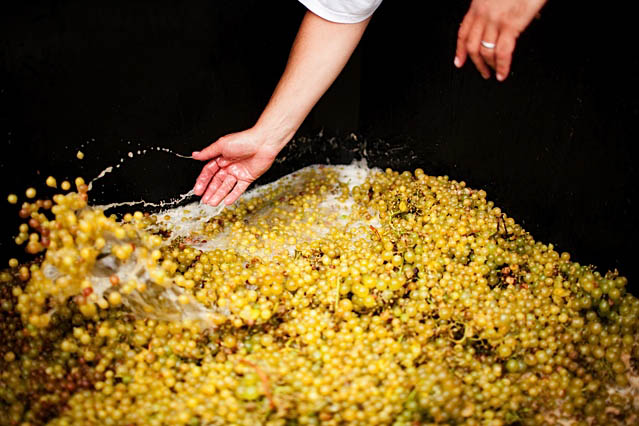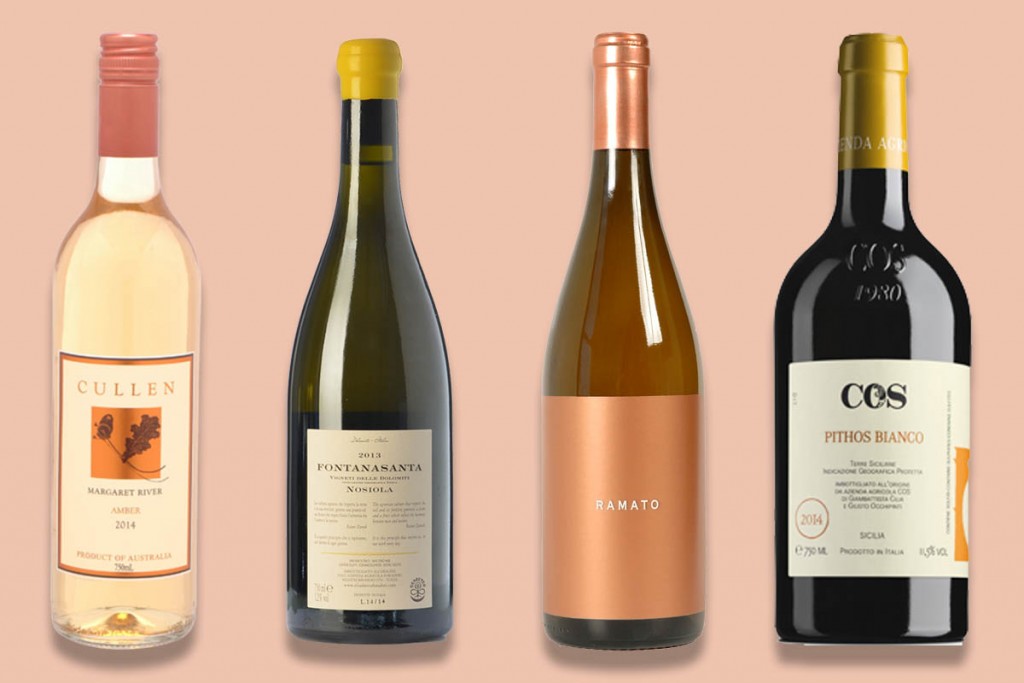
#377
ORANGE WINES
17 Jun 2016 By David Fuhrmann-Lim
The USA might see its first orange president, but does that explain the rise in popularity of orange wines?
BY ELIN MCCOY
When high-end, wine-centric restaurant Rouge Tomate reopens next month in New York’s Chelsea district, there will be plenty of “orange” wines on the list. Traditionally from Georgia in Eastern Europe, these tannic white wines—made like reds, with grape skins left in during fermentation and aging—have been trending for four or five years as vinous exotica, touted as the fourth wine color. Have they finally become more than novelties?
“They’re here to stay,” says Rouge Tomate Chelsea wine director Pascaline Lepeltier, who sent me a long list of her favorite producers.
A surprising number of restaurants around the world now seem to agree. When the London Ritz updated its very traditional 800-wine “Livre du Vin” this year, five orange wines, with two by the glass, were among the 150 wines added from obscure locations. That doesn’t sound like much, but it amounts to a lot at a restaurant previously focused on Burgundy and Bordeaux.
As a judge for the World of Fine Wine’s 2016 restaurant wine list awards, I discovered good orange selections not just at hipster wine bars such as Brooklyn’s Four Horsemen (seven) and 10 William Street in Sydney (25), but also at casual restaurants like Montreal’s Lawrence (eight) and new elegant ones like London’s Fera (more than 30). Fig, a James Beard award-winning spot in Charleston, S.C., added an orange wine category a year ago.
There are no market statistics on the number of orange wines now being sold, but dozens of wineries, including Chapel Down in England, have added at least one to their lineups. Lorena Ascencios, head buyer at Astor Wines, says the large New York shop carries more than ever because of increased interest. And Frank Dietrich of importer Blue Danube Wine Co. says his sales of orange wine continue to rise.
The “fetch” of the wine world has finally happened.
But like me, Lepeltier doesn’t like the term “orange.” She prefers to label them “skin-fermented” wines. (I don’t think that’s going to stick, but I get her point.)
New York’s Gramercy Tavern lumps them together as “Unconventional Whites.” At Frasca, in Boulder, Colo., which won the award for best design/most original wine list, they’re listed as “Macerated Wines.” At New York’s The Clam, they’re labeled “Off-Whites,” not exactly the most flattering description.

In the Hamptons on Long Island, N.Y., Channing Daughters Winery makes an orange wine from pinot grigio grapes. Source: Channing Daughters Winery
Typical whites are pale in color because the clear pressed juice is immediately separated from the grape skins; for orange wines, the juice is kept in contact with the skins for a week to a year, picking up tannin, weight, color, and extra aromas and flavors.
The problem is what to expect when you open one.
Just about any white grape can be made with extended skin contact, but if the juice macerates for more than a year, the wine will be a lot more tannic and have different flavors than if it remains on the skins for only a couple of weeks. Those aged in clay amphorae buried in the earth—the traditional method in Georgia that’s now becoming popular among adventurous winemakers elsewhere—don’t taste like those that spend time in old oak barrels, and so on.
One orange wine can be very different from another, given this whole new layer of complexity outside the typical terroir and aging factors we’re already used to in our reds, whites, and rosés.
The color can be golden, bright amber, peach, or rust, even brownish; the tastes range from fresh-cut apricots, spice, and herbs to tangy, smoky, nutty, and savory, with more intense aromas and the texture and structure of reds without the heaviness. That’s why they’re awfully good in summer, though they’re definitely not going to make rosé passé.

An orange wine from Italy’s Gravner, which ages the juice in beeswax-lined clay amphorae buried underground. Source: Gravner
Making whites this trendy way is an ancient method, first used several thousand years ago in the nation of Georgia. Josko Gravner, the modern godfather of orange wine, brought the idea to Italy and Slovenia, which has been the orange wine epicenter. But the wine world is full of experimenters. Recently I’ve tasted fine examples from Croatia, France, Austria, Australia, California, the Finger Lakes, and Long Island.
A caveat: Some of these wines taste downright weird, with a sour, cidery quality. I’ve watched drinkers take a sip and say, “Oh, how interesting,” before quickly ordering something else. (There is such a thing as showing too much skin.)
But top winemakers make examples that are deliciously complex, even thrilling, and well worth drinking, especially in summer.

From left: 2014 Cullen “Amber” Semillon Sauvignon Blanc, 2012 Foradori Fontanasanta Nosiola, 2013 Channing Daughters Ramato, 2014 Cos Pithos Bianco. Photo Illustration: Evan Ortiz/Bloomberg; Bottles: Vendors
Also – Orange Crush Cocktails

You might be interested in...
PROWINE SINGAPORE 2024
This is What You Should Look Out For at The Upcoming Prowine Singapore 2024, Which Will be Held From April 23 to 26 at The Singapore Expo.
DRINK HERE: TAJINE
Here, You Can Pair Your Briouates and Mechoui with Moroccan-inspired Cocktails & Delicious Wine
VINEXPO ASIA 2023
Asia's Biggest Wine & Spirits Trade Show Finally Debuts in Singapore With The First-Ever Bettane+Desseauve Le Grand Tasting & Jurade de Saint-Émilion Gala Dinner
PROWINE SINGAPORE 2024
DRINK HERE: TAJINE
VINEXPO ASIA 2023